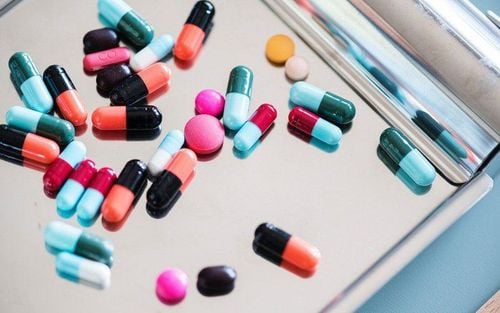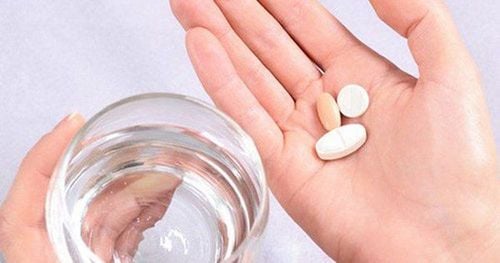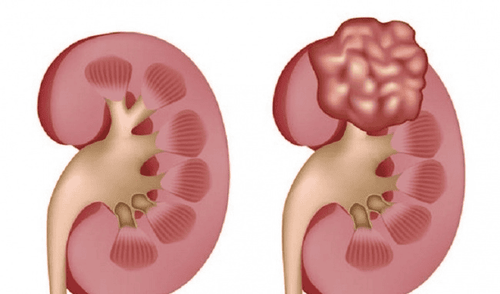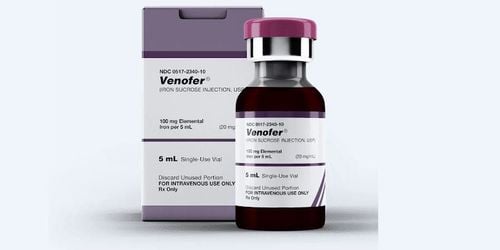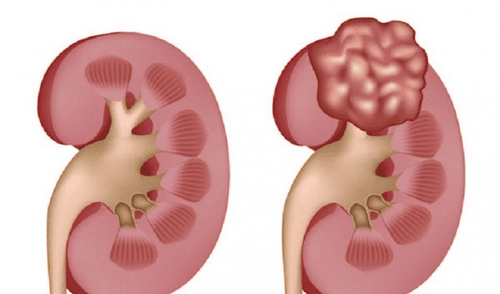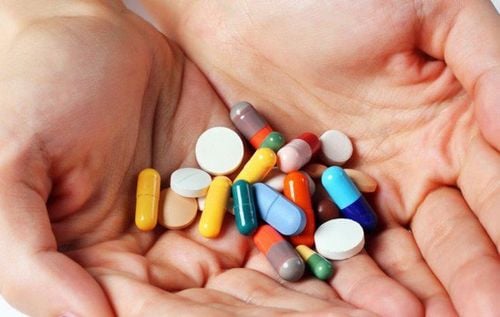This is an automatically translated article.
Spontaneous polycystic kidney disease occurs when fluid-filled cysts develop inside the kidney. Treatments cannot cure the disease, but can reduce symptoms.
1. Use of Tolvaptan in the treatment of idiopathic polycystic kidney disease (ADPKD)
Tolvaptan is a brand name drug sold under the brand names Jynarque and Samsca. However, only Jynarque is effective in treating idiopathic polycystic kidney disease (ADPKD). The drug works to maintain kidney function when it deteriorates rapidly. While using the drug, you will be monitored liver function through blood tests. When you first start using the drug, you need to have regular tests. After that, test every 3 months.
Other side effects from tolvaptan include:
Thirst Frequent urination Large amount of urine in each urination Waking up at night to urinate

Một trong những tác dụng phụ của thuốc Tolvaptan là đi tiểu nhiều lần trong ngày
2. Treatment of blood pressure in people with idiopathic polycystic kidney disease (ADPKD)
High blood pressure is a common symptom that presents in the early stages of idiopathic polycystic kidney disease (ADPKD). Elevated blood pressure increases the risk of cardiovascular disease and faster-growing kidney cysts. Therefore, people with ADPKD need early blood pressure treatment.
The most common blood pressure medications used for people with idiopathic polycystic kidney disease (ADPKD) are ACE inhibitors and angiotensin-2 receptor blockers (ARBs).
Positive lifestyle changes can also help you keep your blood pressure at a healthy level. It is done by:
Low salt diet Limit caffeine foods Regular exercise Quit smoking
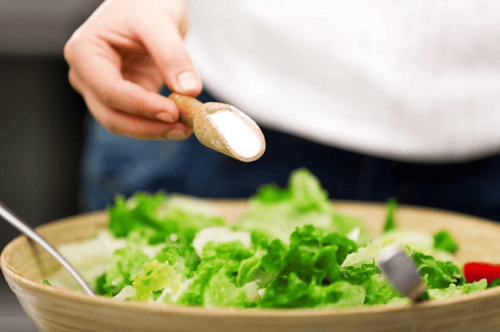
Bệnh nhân huyết áp cao khi bị bệnh thận đa nang tự phát nên hạn chế ăn muối
3. Pain relievers for people with idiopathic polycystic kidney disease (ADPKD)
Pain along with high blood pressure are the most common symptoms in people with idiopathic polycystic kidney disease (ADPKD). Depending on the cause and location of the pain, the following medications may be used:
Acetaminophen : Acetaminophen is used to treat short-term pain. The drug is safe for people with kidney diseases. Opioids: When acetaminophen is not effective for pain relief, opioid analgesics may be used instead. Tramadol (Ultram) is often prescribed for people with idiopathic polycystic kidney disease. Antiepileptic drugs: These drugs, also known as anticonvulsants, help ease chronic pain caused by nerve damage. Examples include gabapentin (Neurontin) and pregabalin (Lyrica). Antidepressants: Some medications for depression also work to ease chronic pain. In general, people with kidney problems should avoid nonsteroidal anti-inflammatory drugs (NSAIDs) such as ibuprofen and naproxen. These drugs can damage the kidneys and reduce the effectiveness of blood pressure medications.
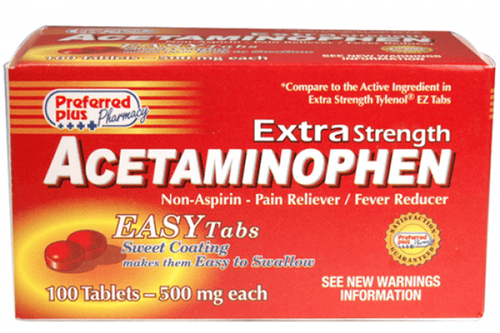
Thuốc Acetaminophen giúp giảm đau cho bệnh nhân thận đa nang tự phát
4. Antibiotics in the treatment of idiopathic polycystic kidney (ADPKD)
Antibiotics treat some of the infections that often occur with idiopathic polycystic kidney disease (ADPKD). In which, the most common diseases are:
Urinary tract infections (UTIs): ADPKD easily causes upper urinary tract infections with symptoms of fever and pain in the side. Kidney infections: ADPKD also increases the risk of a type of kidney infection called acute pyelonephritis. It's a bacterial infection that, like a urinary tract infection, causes fever and side pain. In addition, the cysts themselves can become infected. Antibiotics help cure these infections, helping to eliminate the pain they cause to your body.
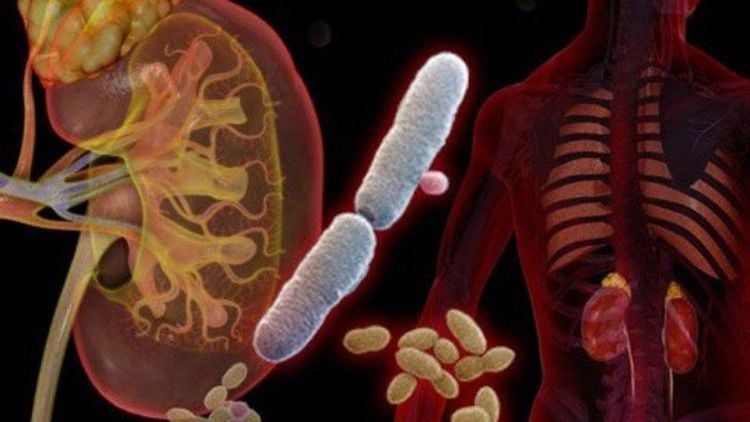
Khị bị nhiễm trùng đường tiết niệu, người bệnh cần dùng thuốc kháng sinh
5. Treatment of kidney stones in people with idiopathic polycystic kidney disease (ADPKD)
About 25% of people with idiopathic polycystic kidney disease (ADPKD) also have kidney stones. Some people with kidney stones have no symptoms, while others experience extreme pain. It needs to be eliminated from the body to prevent long-term kidney damage.
In the case of luck, stones with minor irritation can come out when urinating. Here are a few things you can do to speed up the stone process:
Drink plenty of fluids Take alpha blockers (medications that help flush stones) Don't eat salt or salty foods Some aggressive treatments More applied to large kidney stones such as:
Shock wave therapy uses energy waves to break the stone into small pieces for urinary excretion Surgery to remove or break the stone gravel
6. Surgery in the treatment of idiopathic polycystic kidney (ADPKD)
When medication is not effective in controlling pain or when the disease is advanced, you and your doctor can discuss surgical options. These may include:
Cyst aspiration : Needle drainage of the cyst is the least invasive surgical option, but does not provide long-term pain relief. About one-third of people with ADPKD who have cyst aspiration are painless for an 18-month period. Catheterization: A surgical method to drain a kidney cyst. It provides longer lasting pain relief than cyst aspiration, but is still not a long-term solution. Nephrectomy: When idiopathic polycystic kidney disease becomes severe, surgical removal of the kidney may be indicated. Kidney transplant: Removal and transplantation of the kidney is an option in cases of kidney failure. It took a while to sort out. You need to be evaluated by the medical team at a transplant center. If approved, you will be added to the national transplant waiting list.
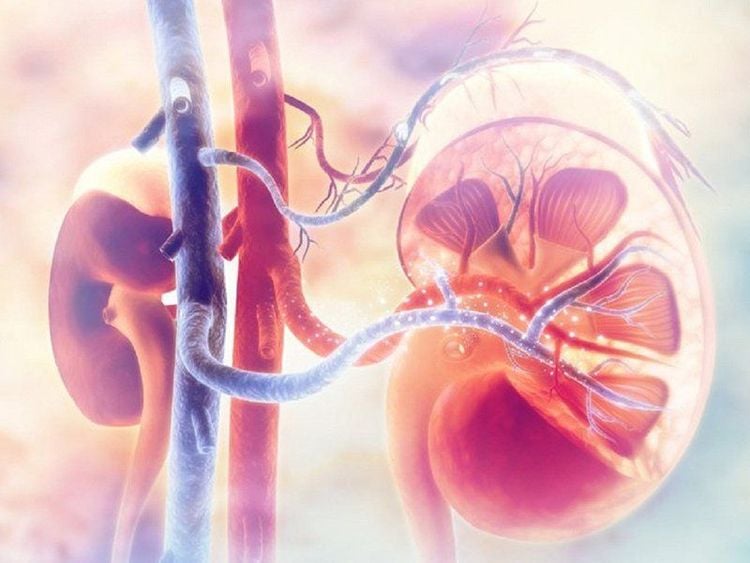
Cắt bỏ thận được chỉ định trong trường hợp người bệnh mắc bệnh thận ở giai đoạn muộn
7. Dialysis in the treatment of idiopathic polycystic kidney (ADPKD)
Dialysis is also an option for kidney failure. During dialysis, you will be connected to a machine that cleans waste products from the blood. When you start dialysis treatment, you will need them for the rest of your life, unless you have a kidney transplant.
Vinmec International General Hospital with a system of modern facilities, medical equipment and a team of experts and doctors with many years of experience in medical examination and treatment, patients can rest assured to visit. examination and treatment of idiopathic polycystic kidney disease at the hospital.
Please dial HOTLINE for more information or register for an appointment HERE. Download MyVinmec app to make appointments faster and to manage your bookings easily.
Reference source: webmd.com




